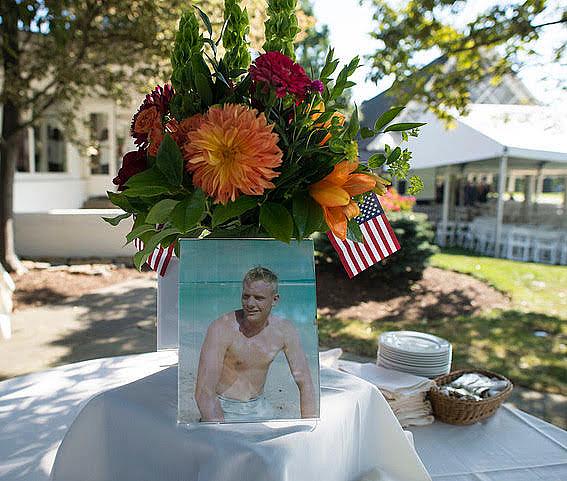Stories on Neil Armstrong's death remind us to check out our own heart care centers

A memorial celebrating the life of Armstrong in 2012 in Cincinnati, Ohio.
(Photo: Bill Ingalls/NASA via Getty Images)
The recent disclosure that Neil Armstrong’s death in 2012 may have been due to complications from a medical procedure was big news for history buffs, space exploration fans, and investigative reporters.
Why?
Because what happened to Armstrong is happening all the time in hospitals large and small, very likely right on your beat. His death is a reminder that understanding the type of care being provided at your local health care centers and the quality of care is essential for giving your audience good guidance on their health care options.
Ask any investigative reporter in health to tick off some of the top causes of avoidable deaths they have witnessed time and time again. They will say unnecessary surgeries and arrogance. (And the latter often leads to the former.) Patients – even one as famous and apparently financially well off as Armstrong – get into certain habits with their health care. They develop trusted relationships with providers and take their advice seriously on what they should and should not do. That makes it easy for doctors – who are often well meaning – to recommend procedures that aren’t necessary or flat out dangerous for the patients.
Armstrong had blockages in two of the three main arteries feeding blood to his heart, and the blockages were not life-threatening, according to reports in the New York Times. In cases like this, physicians often recommend a mix of drugs to treat the condition, not a procedure. Instead, though, doctors rushed Armstrong to the operating room where he underwent open-heart surgery. Wires were connected to his heart – as they commonly are – to keep it operating at a steady pace. As the Times’ Scott Shane and Sarah Kliff wrote:
But when nurses removed the wires for a temporary pacemaker, he began to bleed into the membrane surrounding the heart, leading to a cascade of problems that resulted in his death on Aug. 25.
Being too quick to recommend surgery is a major problem in health care. And many great investigative stories have been written in particular about heart centers that regularly do surgeries on patients that, had they gone elsewhere, would not have happened. After the initial news broke, Gina Kolata at the Times talked with heart specialists about Armstrong’s care, including a heart surgeon who said that for heart care such as the kind Armstrong experienced, it would be better to go to a major medical center and not a community hospital like Fairfield:
For the most part, bypass surgery is safe. But there are 1,150 cardiac surgery programs in the United States, he noted. Many perform fewer than 100, or even 50, bypass operations a year, while major medical centers may do several thousand. Outcomes are generally better there.
Then there’s the question of what you do after complications arise. In Armstrong’s case, instead of taking him back to the operating room, they took him to the cardiac catheterization lab. As Kolata at reported:
Doctors in a cath lab can put drains on a tiny catheter and try to remove some of the blood, but they will not be able stop the bleeding. Nor can they remove clots. By the time Mr. Armstrong got to the operating room, his heart had stopped and he had brain damage from a lack of blood to his brain. He died without regaining consciousness.
There are two big lessons in this story.
First, reporters need to pay attention to court filings. The Times got this story because of a lawsuit. Armstrong’s family sued the hospital in Cincinnati where he had the surgery, Mercy Health — Fairfield Hospital. The lawsuit was settled, and the entire court record was put under seal so that no one would ever know what happened. Until someone mailed copies of the settlement and related court records to reporters at the Times. But clues to what was going on in court were already there to be found. As the New York Times reported, there is an entire court record in probate court because of the Armstrong estate, and in that record, there is a paper trail about the case.
Reporters need to pay attention to what’s being said and not said when someone dies. This story should have been broken a lot earlier. When Armstrong died, his family released a statement: “We are heartbroken to share the news that Neil Armstrong has passed away following complications resulting from cardiovascular procedures.” When you see a statement like that— about a world-famous astronaut or anyone else dying following complications — contact the family. Contact people who know the family. Contact people who might know people who know the family. There was a story there.
Believe it or not, there was actually a commentary in Scientific American shortly after Armstrong died that attempted to bat down any criticism of Armstrong’s care. It’s a little unsettling to read now:
To my mind, those who suggest “Heart Surgeons Kill First Man on the Moon” are behaving irresponsibly. Whether — and how urgently — surgery needs to be done depends on the specifics of a case.
As some of you might recall, I questioned the secrecy around the death of Andy Rooney in 2011, a year before Armstrong died. I’m still miffed about it. No one should die from “serious complications related to surgery,” as the statement about Andy Rooney read.
If we are more vigilant as reporters, we can reveal more of these problems, prompt better outcomes, and help patients have better health care experiences.

